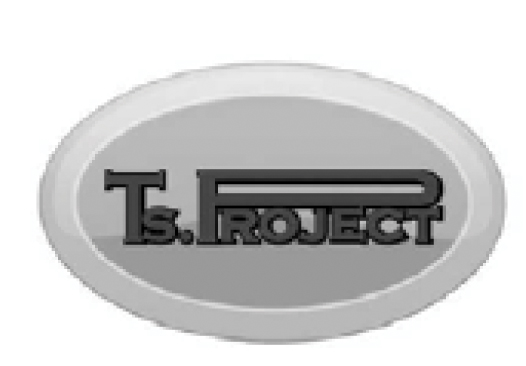Brands play a key role in franchising your business – it is the face of the entire franchise. Choosing a unique brand is therefore essential. The more the brands stands out as distinctive, one in a billion and exceptional, the better. The main reason for this is that the public will view it as a brand and not a generic word or phrase to describe the goods and services it represents.
That is mostly like the reason why Pirelli chose to elongate the first letter in their brand
That they tried to prevent another party from using the unique elongated P is understandable.

was the other brand and the dispute arose in Singapore.
Were the marks substantially similar? Is the letter “P” the dominant part in both marks? Are they so dominant that the other elements in the mark are negligible? Are the marks visually, aurally and conceptually similar? These were some of the questions the Intellectual Property Office of Singapore (“IPOS”) had to contend with when faced with an opposition by Pirelli & C.S.P.A (“Opponent”) against Tao, Hsiu-Chih (“Applicant”).
Although the opposition failed (sadly for the Opponents), the decision by the Hearing Officer from IPOS was interesting for many reasons.
The Applicant owns CSL Sunmaster Enterprises Co., Ltd (“Sunmaster”), a Taiwanese company that designs and supplies curtains, blinds, sunshades and parts thereof. The Applicant claimed that she coined her trademark from her English name, “Tao, Sheena”. The Applicant has registered her mark in Class 20 (Bamboo curtains; indoor blinds of reed, rattan or bamboo (sudare); curtain hooks and related products) and Class 24 (Woven fabrics and knitted fabrics; non-woven textile fabrics; curtains of textile or plastic; shower curtains; curtains and such) in the European Union and Australia.
The Opponents, founded in 1872, initially started out with a factory producing rubber articles and eventually diversified into many industries (which are not related to the Applicant’s industry). The Opponents have 19 tyre industrial plants in four continents, are the fifth largest operator in the world in the premium tyre sector, and were the exclusive tyre supplier for Formula 1 from 2011 to 2013. In addition to the “PIRELLI” trademark above, the Opponents relied on the following trademarks filed in Singapore to support their opposition:

Obviously, the Opponents’ point of contention was in relation to the use of the Elongated P by the Applicant in its mark. The Opponents submitted that the Elongated P is the dominant component of the Opponents’ Marks and this brought similarity between the Opponents’ Marks and the Applicant’s mark, causing a likelihood of confusion in the public, and argued that the use of the mark by the Applicant is an act of passing off.
Interestingly, the Opponents decided to initiate this opposition in Singapore although it had failed in two jurisdictions in the past. The adage “once bitten, twice shy” certainly did not apply here! In fact, that the Opponents lost the opposition in EU and Australia was advantageous to the Applicant here as excerpts from the decisions in EU and Australia were used in this case.
According to the Applicant, the question to ask is whether the common element of the competing marks is so dominant as to render the different elements ineffective in eliminating the similarity between the marks.
While answering in the negative, the Applicant provided that the hearing officer in Australia opined that, inter alia, “the overall impression of the trade marks is one of dissimilarity rather than resemblance” and that the Elongated P was not the portion of the trade mark “which will so overwhelm a person’s mind that they will not remember the word “Project” or “Pirelli” and confuse these two trademarks.”
A similar decision was delivered in EU, where the marks were held to be visually similar to a very low degree and were not phonetically, or conceptually similar.
The Hearing Officer in IPOS concurred with the Australian and EU hearing officers and found that the marks in dispute (shown below) are not visually, aurally and conceptually similar:
The known “overall assessment test” was relied upon whereby “visual, aural or conceptual similarity of the marks in question, must be based on the overall impression given by the marks, bearing in mind, in particular, their distinctive and dominant components”.
With regard to the part of considering the “distinctive and dominant components” of the mark, the Hearing Officer relied on the decision in Matratzen2 whereby the European Court of First Instance dismissed the contention that a consideration of the dominant and distinctive components of a mark would mean a failure to consider the mark as a whole.
Aurally and conceptually, the marks were found different. As for visually, the Hearing Officer held that, in verbatim, “the marks are visually similar in that they have one component, the Elongated P, in common. However, this is not sufficient to make an overall finding of visual similarity as the Application Mark contains other components that are not of negligible significance”.
The Opponents’ argument for passing off failed as well as the Opponents did not have sufficient evidence to prove they had goodwill in Singapore at the relevant time.
Tapering to an end here, the business nuggets a franchise owner could walk away with from this case are as follows:
- When creating a brand for your franchise business, use elements that is not common (letters are found to be common); and
- Understand that decisions and arguments used in other jurisdictions (where the decisions are comprehensive and well-thought out) will be used to the Applicant’s advantage.








